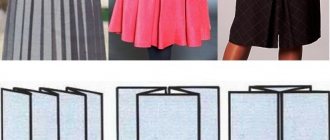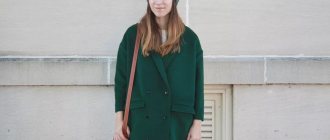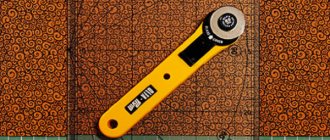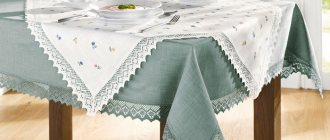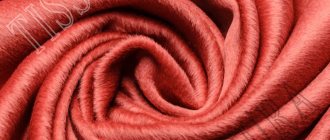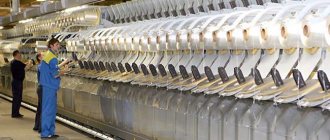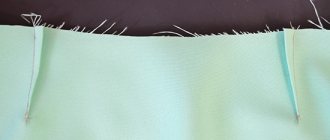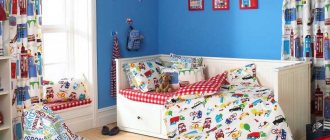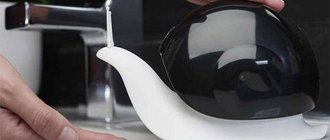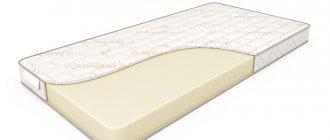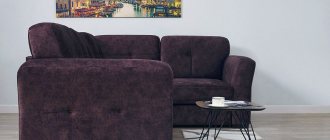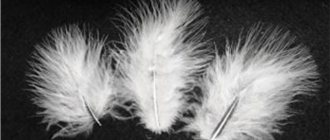LiveInternetLiveInternet
conical skirt pattern
author of the master class ATELIER PRINZ
further words of the author
Conical skirts are now back in fashion. They are very feminine and allow you to emphasize your waist. In this master class I will tell you how to make a pattern for such a skirt yourself in 10 minutes
For this you will need:
- The paper on which we will draw the pattern (any paper, even newspaper).
- A centimeter to measure your waist circumference.
- A simple pencil.
- Ruler.
- Scissors.
First, we need to measure your waist and decide on the length of the skirt. I give the numbers as an example, you just change them to your own.
Waist circumference - 70 cm.
Skirt length - 60 cm.
Now you need to make the next drawing. Below you will see step-by-step construction instructions.
3.
Draw a vertical line starting at point A. From there, measure down the size of half the circumference of your waist minus 7 cm (here 28 cm is segment AB ). From point B, measure the length of the skirt and extend our vertical line to this point (here 60 cm and point C ).
4.
Next, draw a circle with a center at point A and a radius equal to segment AB .
5.
From point B to the right along the circumference, measure half the circumference of your waist with a centimeter (here 35 cm). This will be point R 6.
Next, draw a line from point A , through point R and extend it to the length of our skirt (here 60 cm).
7.
We decorate the bottom with a semicircular line.
8.
We cut along the lines and our pattern is ready! We got one piece, for a skirt you will need two of these 9.
You can see the finished skirt with a contrasting belt, made using this pattern, in the photo.
10.
For such a skirt, you can use both thin flowing fabric and one that holds its shape. It all depends on the effect you want to get
For a skirt 60 cm long (with a waist circumference of 70-75 cm) you will need about 90 cm of fabric 1.5 meters wide,
With a fabric width of 112 you will need 1.5 meters
Inna, did I understand correctly that when cutting, the grain of the fabric is directed from the center of the segment BR to the center of 1/2 of the hem? Not in the direction of the segment BC? —————
Yes, Valentina, that's right! You need to fold the pattern in half and the fabric in half along the grain thread. Cut one part of the skirt with a fold (combining the folds of the pattern and the fabric), the second with a seam in the middle - this will be the back part of the skirt with a zipper.
The layout looks something like this
11.
Or you can cut out both parts with a fold, and make the zipper on the side ——————
It’s possible, then the fabric consumption will increase)
You can make such a pattern according to the width of the hips, lay it out on the floor and estimate the cost depending on the width of the fabric) and make a skirt with elastic
Tell me, what fabric is best to use to get such beautiful coattails? —————— Choose a soft, well-draped fabric. In my case it is a thick knitted fabric
Hugo Pugo
Main types of fabrics
The choice of fabric for sewing depends on several factors: purpose, silhouette, color, season, body type. If this is your first experience, then avoid complex patterns that need to be combined. Expensive and difficult to process materials will also cause inconvenience. Choose a fabric that will not shrink when washed and will last for many years. Next, we’ll look at what fabrics are available for skirts and their features.
Linen is the best material for hot weather. This fabric has many advantages. It can cool in hot weather and keep warm in cold weather. Also, it does not cause allergies, quickly absorbs moisture, is comfortable to wear and allows the body to breathe. The main disadvantage of linen is its wrinkleability and high cost. Suitable for sewing summer skirts in ethnic style that will look appropriate on vacation.- Classic denim - jeans with the addition of cotton is highly durable, so it can be worn for many years. It allows air to pass through well, hardly wrinkles, is easy to care for and is inexpensive. There are also disadvantages: it shrinks after washing and can stain other things. This material is loved by many, regardless of age. Nowadays fashionable A-line skirts and straight silhouettes are made from it.
- Velvet fabric – soft, thick pile, beautiful shimmer and noble appearance. All this characterizes this fabric. Natural velvet is breathable, does not cause allergies and absorbs moisture without creating a greenhouse effect. Good drape allows you to sew different silhouettes of skirts. The downside is that velvet is not suitable for products with a complex cut, as it crumbles. The pile must be treated with an antistatic agent to prevent dust from accumulating on the surface.
- Silk is a weightless, flowing and delicate fabric from which mainly summer women's clothing is sewn. Natural silk is durable, has good hygroscopicity, does not absorb unpleasant odors and is suitable for allergy sufferers. The only disadvantage of silk is its very high price.
- Gabardine is a strong, durable, wrinkle-resistant fabric that allows air to pass through well. Gabardine does not deform or shrink after washing. It is easy to care for, but it is difficult to sew and cut out, because the material is loose and can be damaged by a needle. Ideal for a sun skirt, due to the fact that the fabric holds its shape.
- Satin is a shiny material with a satin or satin weave. Initially, it was created from silk threads, but to increase strength and elasticity, fibers such as cotton, viscose, polyester, and nylon are added to them. This allows you to reduce the cost of the finished product. Satin is a bulk material, so it is difficult for damaged clothing to return to its original appearance. This disadvantage is offset by numerous advantages: hygroscopicity, durability, hypoallergenicity, drapery ability and lack of static electricity.
- Suit fabric - its composition can be different: natural, mixed or completely artificial. It depends on the purpose and cost. The range of costume materials is large: woolen, half-woolen, fine wool, worsted. Fabrics of this group are perfect for a winter or demi-season skirt.
- Corduroy is an undeservedly forgotten material with a mixed composition. Corduroy is durable, wear-resistant, retains heat well and is pleasant to the body. Clothes made from it are easily combined with other fabrics, and the image looks interesting and original.
What to wear it with?
Light and beautiful blouses and tight-fitting sweaters will go well with a half-sun skirt. Most often, girls tuck their sweaters under the bottom. Tops and blouses made of translucent fabrics look attractive with this model. The look can be complemented depending on the time of year with a jacket, sweater or cardigan.
Blouses sewn in the likeness of men's shirts are ideal for “sun” models. You can use strapless tops and turtlenecks made of thin fabrics. A fur vest or leather jacket will beautifully complement your look.
When using a bell skirt, it is easy to achieve a casual style. The top part can be sweaters, blazers, thin sweaters. Sneakers, ballet flats and other shoes are chosen based on style. Sandals without heels will look especially good.
Luxurious pleated models pair well with high heels and fitted blouses tucked in.
Shoes should be selected based on the length of the skirt. Wedges or heels should be worn with a miniskirt. Almost any type of shoe can be worn with maxi models, including those without elevation.
History of origin
The first skirt similar in shape to a cone appeared during the Victorian era. At that time, dresses that gave a lady a beautiful and sophisticated “hourglass” figure were especially popular. Dresses and skirts that highlight the silhouette and waist have become popular among women. The styles in demand during the time of Queen Victoria highlighted the sophistication and nobility of that era. Skirts and dresses were identified with the elimination of everything gross in human nature.
The cone-shaped skirt style blossomed at different times with renewed vigor. A conical skirt suggests a certain pomp, its mystery attracts both fashionistas and their fans. Skirt models are characterized by femininity; thanks to the splendor of the products, the waist is visually reduced, and the hips become more attractive . Today, rigid models with a crinoline, reminiscent of samples from the Victorian era, are no longer so popular. Skirts made of airy and delicate fabrics are more in demand.
